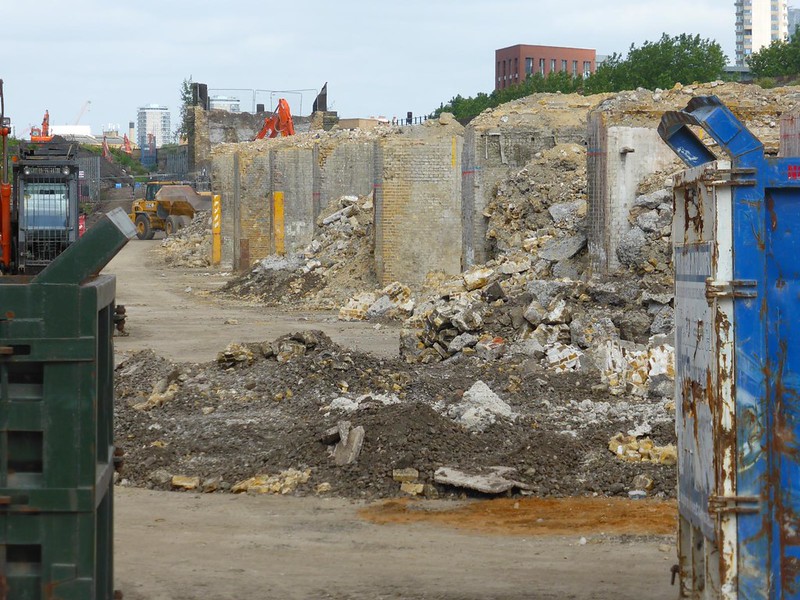I think this updated picture, posted by Unravelled (David Harvey) on flickr yesterday, shows the same reinforced brick pier I mentioned in post #13, back on page 1.

Bermondsey diveunder works by
David Harvey, on Flickr
Is it likely therefore that the presence of the reinforcement around the base means that this will be the 'join' between the old (level) and new (descending) viaduct sections?
Edited to add:
Here's another odd detail, seen on another picture taken yesterday:

Bermondsey diveunder works by
David Harvey, on Flickr
If you magnify the photo and look at the south end faces of the brick piers, there's a set of red/blue painted marks that suggest a gradual slope down towards the west (London Bridge direction). Are they possibly recycling the piers as part of the new viaduct for Southeastern services towards the underpass?















